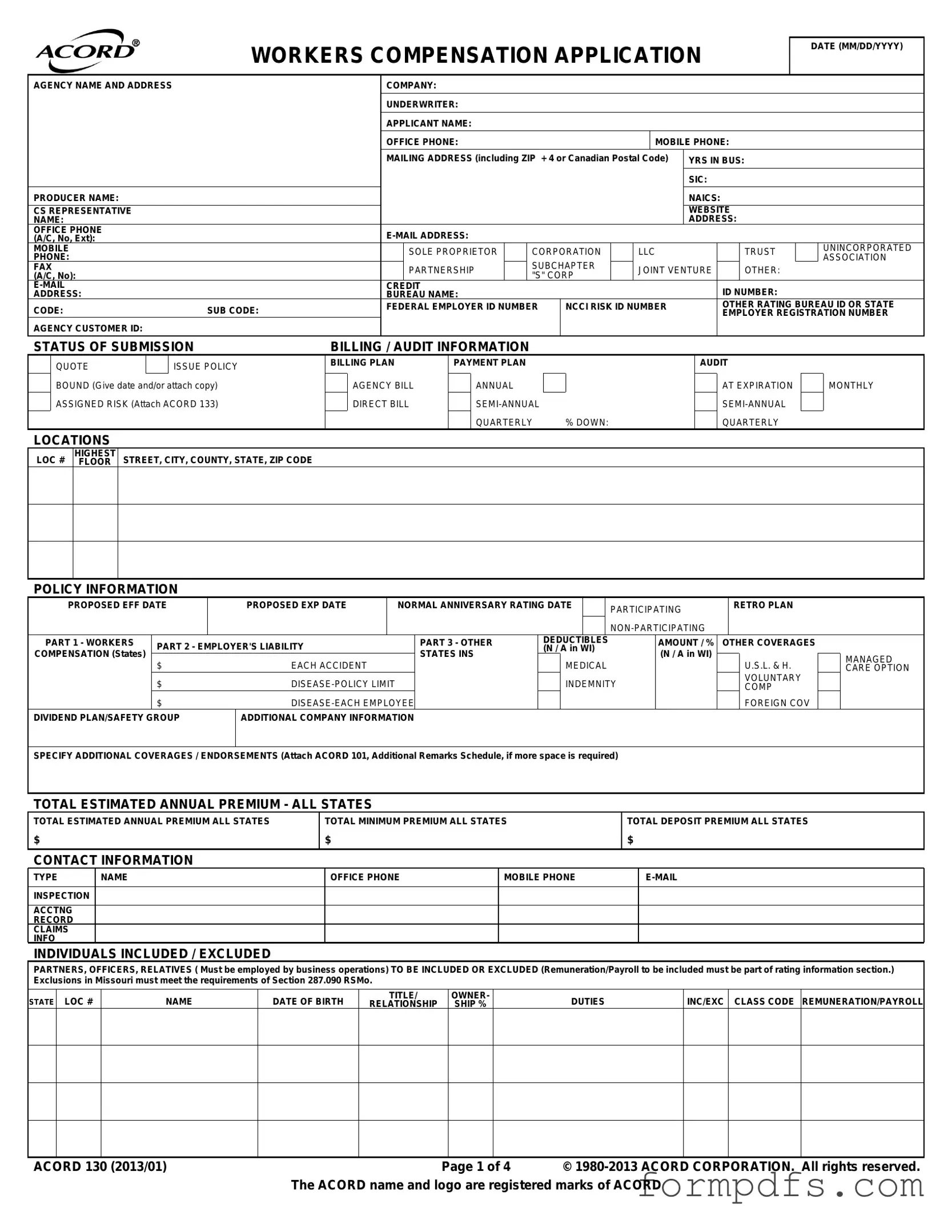What is the purpose of the ACORD 130 form?
The ACORD 130 form is primarily used to apply for workers' compensation insurance. It gathers essential information about the applicant's business, including details about the business operations, employee classifications, and estimated payroll. This information helps insurance companies assess the risk associated with providing coverage and determining the appropriate premium rates. By completing this form accurately, businesses can ensure they receive the necessary protection for their employees in case of work-related injuries or illnesses.
What information is required on the ACORD 130 form?
The ACORD 130 form requires a variety of information. Applicants must provide their business name, address, and contact details. Additionally, details about the business structure (such as whether it is a corporation or partnership) and the number of years in operation are needed. The form also asks for specifics about employee classifications, estimated payroll, and prior insurance history, including any claims made in the past five years. Accurate and complete information is crucial to ensure a smooth application process and appropriate coverage.
How does the ACORD 130 form affect my workers' compensation premium?
The information provided on the ACORD 130 form directly influences the calculation of the workers' compensation premium. Insurers use the details about the nature of the business, employee classifications, and payroll estimates to assess risk. Higher-risk businesses may face higher premiums, while those with a safer work environment may benefit from lower rates. Furthermore, factors such as claims history and safety programs can also affect premium costs. Therefore, providing accurate information is essential to obtaining a fair premium rate.
What should I do if I have questions while filling out the ACORD 130 form?
If you have questions while completing the ACORD 130 form, it's advisable to reach out to your insurance agent or broker. They can provide guidance on specific sections of the form and clarify any terminology or requirements. Additionally, they can assist in ensuring that all necessary information is included, which can help expedite the application process. Don't hesitate to ask for help, as accurate completion of the form is vital for obtaining the right coverage for your business.
